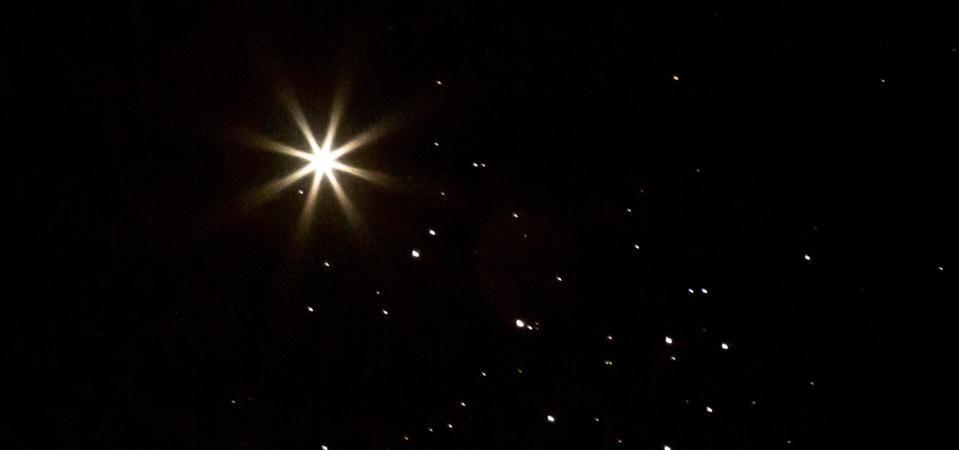
What’s that bright “star” in the east?
Most of the planets in our Solar System have a nickname. Mars is the “red planet,” Saturn the “ringed planet” and Earth, of course, is the “blue planet.” Venus, however, has two nicknames— the “Evening Star” and the “Morning Star”—oh, and “Earth’s evil twin.”
The first two refer to when the second planet from the Sun is close to its maximum brightness—either shortly before sunrise or shortly after sunset, as seen from Earth.
The former is what’s going on this weekend as Venus appears at its farthest from the Sun.
It’s among the bests times to go look at Venus, which will be shining very bright. It will be the third-brightest object in the sky after the Sun and the Moon.
Here’s how to get a look at Venus this weekend:
When to look for Venus
Just before sunrise on Sunday, March 20, 2022 Venus will be at its “greatest western elongation,” astro-speak for it seeming farthest from the Sun during its current apparition.

Where to look for Venus
Above the east-southeast horizon. That’s where all stars and planets appear to rise because Earth rotates on its axis west to east.
Venus rises about 90 minutes before sunrise this month, but the closer you get to sunrise the higher Venus will be. Venus will be in the constellation of Capricorn.
How to look for Venus
Just use your own naked eyes and you'll see an unmistakably bright, white object shining above the horizon. Look carefully and you’ll also see the very much dimmer planets Mars to its right and Saturn just below-left.
What does Venus look like? It’s white and bright to the naked eye largely because it’s shrouded in cloud, which reflect sunlight, and it’s relatively close to us.
It will shine at a visual magnitude of -4.4, which makes it easily the brightest object in the sky after the Sun and the Moon. That’s despite it being only 50% illuminated this weekend.
NASA’s new obsession with Venus
NASA is sending two new $500 million “Discover” missions to Venus, DAVINCI+ and VERITAS in the late 2020s. Why? Venus may have been the first habitable world in the solar system—complete with an ocean and Earth-like climate—before it became a hothouse inferno. It’s being increasingly seen as a “Rosetta Stone” for reading the record books of climate change, the evolution of habitability, and what happens when a planet loses a long period of surface oceans.

What is DAVINCI+?
DAVINCI+ (Deep Atmosphere Venus Investigation of Noble gases, Chemistry, and Imaging Plus): will analyze Venus’ atmosphere to understand how it formed and evolved and determine whether Venus ever had an ocean.
During its 63-minute descent, DAVINCI+ will collect and return measurements of Venus’ atmospheric composition. In doing so it will become the first U.S.-led mission to Venus’ atmosphere since 1978.
What is VERITAS?
VERITAS (Venus Emissivity, Radio Science, InSAR, Topography, and Spectroscopy): will map Venus' surface to determine the planet's geologic history. NASA wants to know more about the origin of many of the planet’s past and present geological processes, from its core to its surface.
VERITAS would be the first mission to study the Venusian surface since 1994 when NASA’s Magellan spacecraft finished examining the planet’s geology.
Wishing you clear skies and wide eyes.







